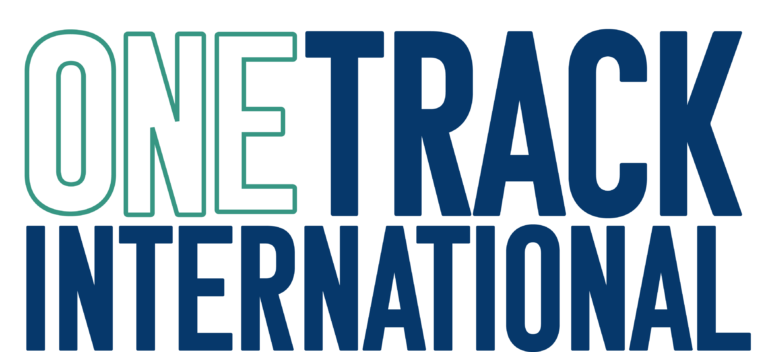ONETrack International’s most recent project in Kosovo started in association with Shpresa dhe Shtëpitë e Fëmijëve (Hope and Homes for Children) to support children without parental care or who are the victims of domestic violence, abuse or human trafficking.
According to a recent report of the United Nations Development Programme (UNDP), Kosovo is considered to be the country with the youngest population in Europe with over half of its 1.8 million inhabitants under 30 years of age, compared to an EU average of 40.9 years. But despite this, little recognition is given to the critical role that children, youth and women play in national development, which is one of the reasons why the country keeps fighting against poverty.
Institutional bodies and positions have been created to facilitate a focus on children’s rights, but not all of them are equally successful nor have the Kosovar institutions had the desired capacity to contribute to sustainability. Part of the problem comes directly from how resources are allocated between municipalities. Administratively, Kosovo is divided into 38 municipalities and in the last decade, a strong focus of the administration has been on the decentralization process as a way to improve a variety of local issues including the increase of local representation and child protection systems. However, the funding, as well as several services (such as those for children without parental care and people with disabilities), remains concentrated in policy development at the central level, with limited delivery and financing.
In other words, decentralization highlighted shortcomings in full and equitable child rights and a lack of local capacity to implement various reforms.
Consequently, significant challenges still need to be addressed in order for the equitable realization of rights and results for children. Poverty remains a harsh reality for many in Kosovo, especially for women, children, ethnic minorities, people with disabilities and rural populations, who are disproportionately affected. According to the World Bank, the proportion of children living in poverty is estimated at around 23% including more than 7% living in extreme poverty. This is undoubtedly a root cause of many negative consequences for the fulfilment of child rights in Kosovo, including child marriage, lower access to services and poorer social outcomes.
In addition, in line with UNICEF statements, child protection also represents an unsolved problem with 11% of children involved in child labour, including 7% working in hazardous conditions. As well as an estimated 61% of children up to age 14 who have suffered from psychological and physical violence. Reports from governmental and non-governmental institutions speak about increasing child involvement in behaviours that are in violation of the law, including theft, violence and substance abuse. Currently, Kosovo’s alternative care services for children include living with relatives, foster care and, to a limited extent, residential care. The statistics suggest there is more work to be done to expand the reach of these services.
Education is another matter to discuss. Despite having a relatively young population, education in Kosovo is not yet up to international standards. Children often go to primary school in shifts of three or four groups due to lack of adequate infrastructure, preschools are sometimes in the early stage of development and currently less than 10% of children aged three to six have access to early childhood education.
In a similar way, the situation with minority communities could be improved. Several minorities of non-Albanian ethnic origin live in Kosovo, including the Roma, Ashkali and Serbs. They represent nearly 8% of the population, about 160,000 people. Children from these groups are more readily exposed to violations of children’s rights. A distinction should be made between children who are victims of violence, and those who are mostly affected by poverty, begging and lack of schooling- which is more common in minority communities.
In the recent years in Kosovo, there has been an increase in the number of children involved in street begging, the number of children used as child labour, and the emergence of human trafficking cases concerning under-aged victims. According to the Kosovo Agency of Statistics – over a tenth of children aged 5-17 were engaged in child labour.
The government and international donors provided support to seven NGOs to assist children and female victims of domestic violence. As of 2016, there were 10 shelters for victims of domestic violence. The Ministry of Labour and Social Welfare in Kosovo, as a mandated body for provision of protection and services for children in need, in the absence of public shelters, has continuously contacted the Hope and Homes for Children to provide community-based services for vulnerable children during their childhoods.
During the war in 1998, thousands of people had to flee their homes, and few of them managed to go back, therefore in a state of extreme poverty, many families still live on the streets or in makeshift camps with their children. Political change and instability, gender discrimination conditions, economic and social distress related to the post-conflict situation and lack of adequate social safety nets, have contributed to an increase in child abandonment in Kosovo. More than 600 infants have been abandoned since 1999. Initially many organizations, such as the Hope and Homes for Children, established “transit baby houses” for infants abandoned in the hospitals, attempting to move the children to adoption or foster care facilities in the hope that they will be better cared for and nurtured, given that 5% of children in Kosovo are malnourished.
Since 2001, Hope and Homes for Children (or, SDSF) has been providing a unique and exclusive social service for over 700 children at risk in Prizren and Prishtina using a child-focused approach that is designed to meet each child’s individual needs. Some of their services and activities include providing children with psychological evaluation and assistance, social counselling, rehabilitation services to prepare the child for socioeconomic integration, as well as registering the children in the community school and arranging informal education in the shelter when registration in school is not possible.
ONETrack International is administering its Transition to Home strategy in Kosovo as well as helping to support the Hope and Homes for Children program with its reintegration system in order to provide education to children in a safe environment.
Sources:
ONETrack International in Kosovo. https://onetrackinternational.org/kosovo/
Cantwell, N.; Davidson, J.; Elsley, S.; Milligan, I.; Quinn, N. (2012). Moving Forward: Implementing the ‘Guidelines for the Alternative Care of Children’. UK: Centre for Excellencefor Looked After Children in Scotland. https://www.alternativecareguidelines.org/Portals/46/Moving-forward/Moving-forward-implementing-the-guidelines-no-appendice-1.pdf
Humanium. Children in Kosovo. https://www.humanium.org/en/kosovo/
UNICEF. Analysis of the Situation of Women and Children in Kosovo. https://www.unicef.org/kosovoprogramme/media/1141/file/SITAN.pdf
UNICEF. EVALUATION OF UNICEF KOSOVO PROGRAMME (2016–2020). https://www.unicef.org/kosovoprogramme/media/1641/file/Evaluation%20of%20UNICEF%20Kosovo%20Programme.pdf
United States Department of State. KOSOVO 2016 HUMAN RIGHTS REPORT. https://www.state.gov/reports/2016-country-reports-on-human-rights-practices/kosovo/
World Bank. CONSUMPTION POVERTY IN THE REPUBLIC OF KOSOVO. http://documents1.worldbank.org/curated/en/210201560762490515/pdf/Consumption-Poverty-in-the-Republic-of-Kosovo.pdf


